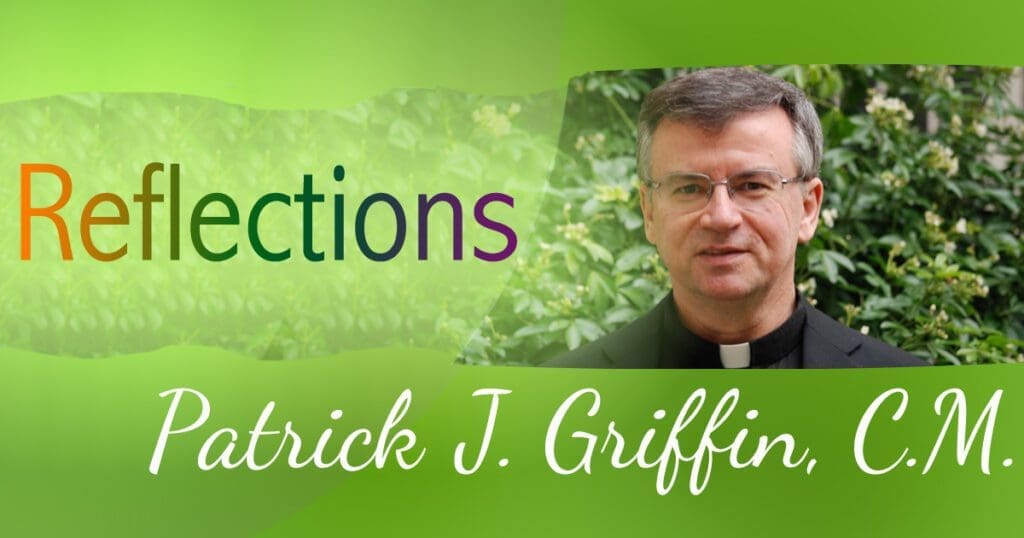The place of Mary sometimes surfaces in my reflections on the holy days of the Easter Triduum.
As I meditated upon Holy Thursday, I considered the question of why Jesus decided to wash the feet of his disciples. In my essay of a few weeks ago, I offered the thought that the experience of having his feet washed by the “sinful woman” (Lk 7:36-38) and by Mary, the sister of Martha and Lazarus, (Jn 12:3) might have risen in his mind. Thinking on these actions could have led him to participate in this simple act of service. What also arose in my mind were other times when Jesus would have had his feet washed—by his mother, Mary, when he was a child. In the past few years, I have been blessed to be a granduncle six times. (The last time was only two weeks ago with Claire.) I have watched my nieces and nephews washing the feet of their children after a rough day of running around barefoot. Something very beautiful and intimate takes place. Love in action. I wonder if any part of this care entered into Jesus’ mind. Did he think of Mary?

On Good Friday, we heard the passion from John. This Gospel contains the only passage in which Jesus observes his mother at the foot of the cross (Jn 19:25-27). We can imagine her there and the added pain that it brought to Jesus as he saw her suffering. Michelangelo has captured something of this time for us as he created the Pietà and placed the body of Jesus in Mary’s arms. What also comes to my mind on this day is a wonderful sentence from Pope Francis:
The single lamp lit at the tomb of Jesus is the hope of the mother, which in that moment is the hope of all humanity. (Pope Francis, Rejoice, 02Feb14, §12)
The phrase (the single lamp lit at the tomb of Jesus) is so evocative; it invites a participation in the hope of Mary. On our best days, we rest by her and look for the meaning of this event as we move from Friday into Saturday. We prepare ourselves for the revelation and demonstration that “nothing is impossible with God” (Lk 1:37).
The Easter Vigil opens the tomb for us and we see it empty. The body of Jesus has disappeared. Angels offer some words of instruction. Then, some women meet the risen Lord, and later other encounters happen in the last chapters of Matthew, Luke and John. The Acts of the Apostles also tells some stories that complete these experiences. Not recorded is any encounter with the Blessed Mother! In my heart, I cannot believe that such a visitation did not take place. I am captured by the refrain from a beautiful hymn (Hugues Aufray):
O Mary, weep no more: your son our Lord sleeps in peace;
And his Father in glory opens the doors of life!
O Mary, rejoice: the risen Jesus has conquered death!
Called to delight in that precious moment, we can imagine how her joy would have no bounds.
The place of Mary in the celebration of the Triduum reflects her place in the ministry of Jesus. Supportive and close-by, as the true disciple she offers a model for us in the way in which we can celebrate and consecrate our faith and hope as embraced in love.





At the Easter vigil, our pastor talked about his belief that Jesus had already visited with his mother before he appeared to the disciples after the Resurrection. He saw her first and it was a very intimate visit. He’s mentioned this before and although I’d never thought about that until he mentioned it, it sounds like the right thing for a devoted son to do. And who could be a more devoted, loving son than Jesus?